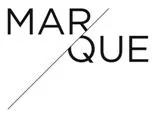Increasing video evidence hasn't stopped police brutality, but it's getting much harder to ignore.
The principles which many police forces and individual officers bring to their work are being laid bare, in graphic moving imagery. It isn't pretty. What is apparent to all who are willing to see is what the minority victims of policy brutality have been telling us for, well, ever.
I wrote last week about a seemingly strange phenomenon, clearly observable in the Surry Hills incident when a NSW police officer was filmed violently taking down an Indigenous teenager who had given him some (inexcusable) lip. What struck me was the officer's unconcern about the fact that he was being recorded, leading to the conclusion that he must not have been worried at all about facing consequences for his actions.
The same thing is being noticed around the world, especially in America. It has been remarked that Minneapolis policeman Derek Chauvin was very comfortable being filmed for the whole eight minutes and 46 seconds spent pressing his knee into George Floyd's neck, as were the three other officers who stood by watching.
That incident was examined in detail by the MIT Technology Review last week, and it made an interesting point: our instinctive assumption — that the stark obviousness of the video evidence of such an atrocity will result in both consequences and meaningful change — has no basis in fact.
This, when you think about it, is undeniably right. In March 1991, a group of Los Angeles police officers were filmed pulling Rodney King, an African-American man they had stopped for drink-driving, out of his car and beating him nearly to death. The internal Los Angeles Police Department review concluded he had been struck at least 53 times by batons, and he had been tasered as well.
Four officers were charged with police brutality and all were acquitted, causing the 1992 LA riots. The video is sickening; it is difficult to understand why anyone would want to do what those men did to another human, and impossible to accept that they acted within the law. But that was 29 years ago.
As we know, 437 Indigenous Australians have died in custody during the same period, yet no one has been convicted. In many cases, there is video evidence of what happened; most notoriously, in the case of David Dungay. There is no evidence, however, that anything has changed.
As the MIT article points out, the emergent ubiquity of video evidence has not made any appreciable difference to the incidence of police brutality. That is equally clear with respect to deaths in custody here.
The reason posited is that information and power are two completely different things. It is all well and good to be able to prove what happened, but it doesn't matter if the power structures don't care.
There is, as it turns out, no reason to expect that the existence of evidence of atrocities will on its own reduce the likelihood of their occurrence (or recurrence). It's not the fact of being immortalised that deters the perpetrators. In a sense that is not surprising, because acts of racist violence are expressions of hatred and distorted pride.
That is not to say that the evidence will not have an effect. It will not enlighten the minds of those who commit racist acts. They already know that their behaviour stands outside the bounds of ordinary human decency, and they are fine with that.
It's never been up for debate whether it's appropriate that police should treat people of colour more harshly or violently because of their colour. It's always been, in polite society, wrong. But society tolerates multiple layers of indecency, all the time. We allow the justice system to brutalise Aboriginal people in ways that we would not tolerate for one second for anyone else.
Within that system, the brutalisers learn that they are protected by that wilfully blind complicity.
However, the sheer preponderance of video is smacking our consciousness in the face, and it's getting very hard to ignore. The evidence of discriminatory violence is piling up. This pricks us to discomfort with what is being done for our sake by the people we put in uniform. As is happening more often with war crimes, we're starting to say about police conduct that it is not acceptable in terms of ordinary human decency.
The trick is forcing the power structure to take notice. It is fascinating that, in the US at least, there is a serious conversation beginning about defunding, disarming and even disbanding police forces. This reflects the growing divide between the police culture's perception of itself and the community's perception of its actual social value.
Ultimately, as with all institutions, the authority of the police is an article of faith. They may well not change, and all the videos in the world can't make them. But the evidence, which we cannot unsee, is forcing itself between the police and the policed and undermining the basic assumption of legitimacy that is the sole foundation of their power.
We do not disclaim anything about this article. We're quite proud of it really.

